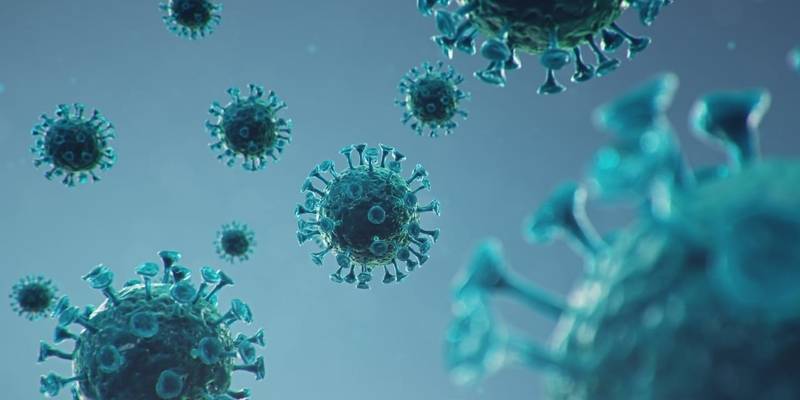What goes in the development of a COVID-19 antigen test?

The ongoing COVID-19 pandemic, medically termed as CoV-SARS-2, has not only impacted billions of lives physically but has also had detrimental effects on economic systems. Thus, it has exposed the flaws among developed as well as developing nations and has left the world reeling with poverty, unemployment and uncertainty. In order to answer these existing questions, it is imperative that a cure is found at the earliest and the process of restoration commences. The first stage involves adequate testing so that one can understand its severity and the various effects on public health.
You may have heard that several companies and government agencies have developed various types of tests to detect the new cases of COVID-19. Some of these companies have even gone on to patent their designs while developing an antibody or antigen test. After my internship with the Ministry of Health and Family Welfare, I had the opportunity to develop an antigen rapid test kit for a corporation. In this project, I learnt about how the testing for antigens works, its complications and the importance of time. Through this article, I’ll try to explain what goes in the making of an antigen test.
What is Coronavirus?
COVID-19 is caused by severe acute respiratory syndrome coronavirus 2 (SARS-CoV-2). It is a strain of virus that has been derived from the family of coronavirus. It is a highly contagious virus that can spread through respiratory channels. The virus seems to have emerged from bats and its initial outbreak can be traced to a wet market in Wuhan, China. The new virus strain is a much more complex and life-threatening version of SARS in 2003, which killed 299 people in Hong Kong. In 2003, healthcare workers, as well as hospital staff, were the major victims of the virus as they lacked knowledge and proper protective equipment.
17 years later, the virus has taken millions of lives around the globe due to a change in its protein structure that has left the researchers in a fix. In comparison to the previous strain of SARS, the novel coronavirus has a different structure of spike proteins (SI and S2). It plays a vital role in interacting with the host cell receptors and spreading infection through fusion. As a result, it is difficult to mutate the virus.
What is an antibody and antigen test?
Antibody test
There are different types of antibody tests. ELISA (enzyme-linked immunosorbent assay) is the most common one. It uses a lateral flow assay, a similar technology which is used in pregnancy tests. Antibodies are proteins that are generated by our bodies when foreign bodies such as viruses and bacteria enter and attack our immune system. There are three types of antibodies in our body – IgA, IgG and IgM.
Our immune system responds to threats by generating suitable antibodies to fight the infection. Data suggest that in the case of SARS-CoV-2, the IgM antibody response, which is the first set of antibodies that are produced after getting exposed to the virus, peaks around two weeks post-infection. Meanwhile, the IgG antibody peaks around three weeks. The duration of antibody production depends on various factors such as age, pre-existing health conditions, environment and genetics in the host human body.
The antibody test is responsible for detecting the antibodies generated by our bodies when infected by a foreign virus. The antibody test is cost-effective and can be produced at mass volumes to test billions of people. However, the drawback of this test is its unreliability to detect cases of infection at an early stage. Since it takes at least one week for human bodies to generate antibodies, or even longer in most cases, the test can give false results, especially when tested too early on a patient. This shortcoming could potentially increase the spread of the virus through people who are infected but not aware of it. Despite the fact that they are cheaper and can be produced in volumes, it is not suitable for a pandemic as it lacks accuracy. The tests can be used at a later stage of the pandemic to identify the percentage of the population affected.
Antigen test
On the other hand, the antigen test is critical for diagnosing. It uses a different testing mechanism where the antigen itself is tested. An antigen is a foreign body which triggers an immune response to generate an antibody in the host. In short, CoV-SARS-2 is an antigen itself. Among several types of antigen tests, Rapid RT-PCR is the most commonly used test to detect COVID-19. Antigen tests are extremely expensive to manufacture in volumes and needs to be well researched as well as approved by FDA or CE. However, its ability to detect virus even at initial stages, help in containing the widespread.
My experience
On my return to Hong Kong from India, I was under a mandatory two-week quarantine as instructed by the HKSAR government. Meanwhile, I had the opportunity to build a project proposal for a renowned organisation to develop a test for detecting SARS-COV-2. After intensive research, I gathered enough secondary data to initiate the proposal. During the research period, I spoke to several professionals as well as healthcare companies to have a better understanding. In the end, I advised the organisation to invest in a portable lateral flow assay using the sandwiched ELISA technology to test for antigens.
Basically, I mixed both the traditional approaches in antibody and antigen testing. I suggested applying lateral flow assay (mostly used for antibody test), to test for antigens instead of using the traditional RT-PCR. Instead of using blood, I suggested using sputum as it is much easier to extract and gives higher accuracy as shown in previous clinical trials. However, the biggest challenge while using this approach is to develop the right purifying protein to purify and filter excessive proteins in the subject’s sputum sample which will require additional research. I also proposed to use antibody samples from those who recovered from SARS-CoV-2 as the probe in the proposed equipment. So that when an infected patient is tested with their sputum, those antibodies will automatically be attached to the sputum samples to indicate whether the tested subject has the antigen in the body or not.
Conclusion
It was a privilege to work for a reputed organisation and brainstorm ideas on how one could possibly develop a COVID-19 rapid antigen test. Despite the fact that it requires a lot of time, resources and investment, it is essential to develop a kit that would enable us in combating against the pandemic. As far as successfully developing a vaccine is concerned, human behaviour, public policies and socio-economic factors will play a vital role.
GLOSSARY
- SARS-CoV-2: Severe Acute Respiratory Syndrome Coronavirus 2
- COVID-19: Coronavirus Disease 2019
- IgM: Immunoglobin M or IgM is the largest antibody which is found in B cells. It is also categorised as the first line of defence in humans as it is the first antibody to appear in response to a foreign body.
- IgG: Immunoglobin G or IgG is the most common type of antibody found in our bodies. It makes up 75% of serum antibodies and is found in blood and other bodily fluids. It helps in protecting against bacterial and viral infections.
- IgA: Immunoglobin A is the type of antibody found in high concentrations in the body’s mucous membranes, particularly the respiratory passages and gastrointestinal tract. It can also be found in saliva and tears.






